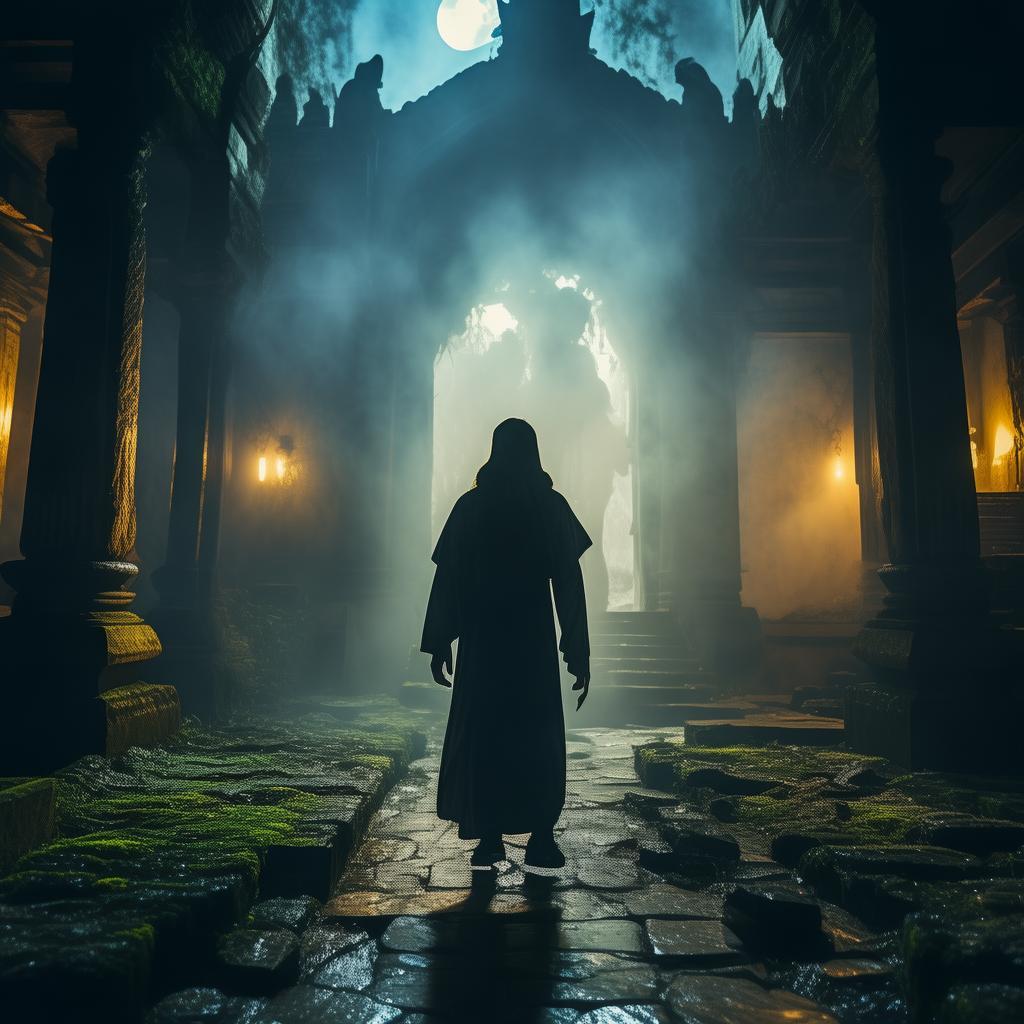Whispers in the Attic: The Enigma of the Vanishing Photograph
The old house stood at the edge of the town, its weathered walls whispering tales of forgotten years. Among the cobwebs and dust, the attic held the secrets of the family that once called it home. It was in this attic that a young woman named Eliza found herself, drawn by the mysterious allure of a photograph that had been her grandmother's prized possession.
The photograph was of a young couple, a man and a woman, both of them smiling brightly at the camera. Eliza had seen it countless times, but it was only after her grandmother's death that she noticed the strange indentation on the back. It was almost as if the photograph had been torn from a larger piece of paper, leaving behind a faint outline of what might have been.
One evening, as Eliza rummaged through the attic's shadows, the photograph slipped from her fingers. She reached out to catch it, but it was gone. The indentation on the back was the only evidence it had ever been there. Eliza's heart raced as she retraced her steps, searching for any sign of the photograph, but it was as if it had vanished into thin air.
Intrigued by the disappearance, Eliza began to research the couple in the photograph. She discovered that they were distant relatives, the husband a war veteran with a mysterious past, and the wife a woman who had mysteriously vanished without a trace. The more she delved into their story, the more it seemed that the photograph held the key to a dark family secret.
Eliza's journey took her to the local library, where she found old newspapers and letters that pieced together the couple's lives. The man, it seemed, had been involved in espionage during the war, and the woman had been his partner in a dangerous game. Their love had been a fragile thing, held together by a need for secrecy and a desire to escape the shadows of their pasts.
As Eliza's research deepened, she began to experience strange occurrences. At night, she heard whispers in the attic, as if someone were trying to communicate with her. The temperature would drop suddenly, and she felt a cold breeze brush past her. It was as if the past and the present were colliding, and the photograph was at the center of the storm.
One evening, as Eliza sat in the attic, the whispers grew louder. She followed them to a hidden compartment behind a loose floorboard. Inside, she found another photograph, this one of the couple standing in front of a house she recognized as her grandmother's childhood home. The photograph was dated just before the woman's disappearance.
Eliza realized that the photograph she had found in the attic was a copy, meant to be hidden. It was a message, a clue to the woman's fate. She followed the trail to the old house, where she discovered a hidden room filled with letters and diaries. The woman had been trapped, held captive by her own past and the man she loved.
As Eliza read the woman's words, she learned that she had been the one to unravel the couple's secrets, leading to their downfall. The photograph had been a part of a plan to escape, but it had backfired, leading to her capture and the man's death.

The revelation was shattering. Eliza understood that the photograph was a piece of her own family's history, one that had been hidden away to protect her from the truth. As she held the photograph in her hands, she felt a connection to the woman, a sense of kinship in their shared past.
Eliza returned home, the photograph tucked safely in her pocket. She knew that the past was never truly gone, but it was time to face it. She began to share the story with her family, to unravel the secrets that had been kept for so long.
The attic became a place of solace, a sanctuary where the past and the present could coexist. The photograph, now framed and placed on the wall, was a reminder that some stories are worth telling, even if they are haunted by the whispers of the past.
In the end, Eliza found peace in understanding her family's history. The photograph had been a catalyst, a key to unlocking the enigma of her ancestors' lives. And while the past could not be changed, it could be embraced, learned from, and ultimately, accepted.
✨ Original Statement ✨
All articles published on this website (including but not limited to text, images, videos, and other content) are original or authorized for reposting and are protected by relevant laws. Without the explicit written permission of this website, no individual or organization may copy, modify, repost, or use the content for commercial purposes.
If you need to quote or cooperate, please contact this site for authorization. We reserve the right to pursue legal responsibility for any unauthorized use.
Hereby declared.









